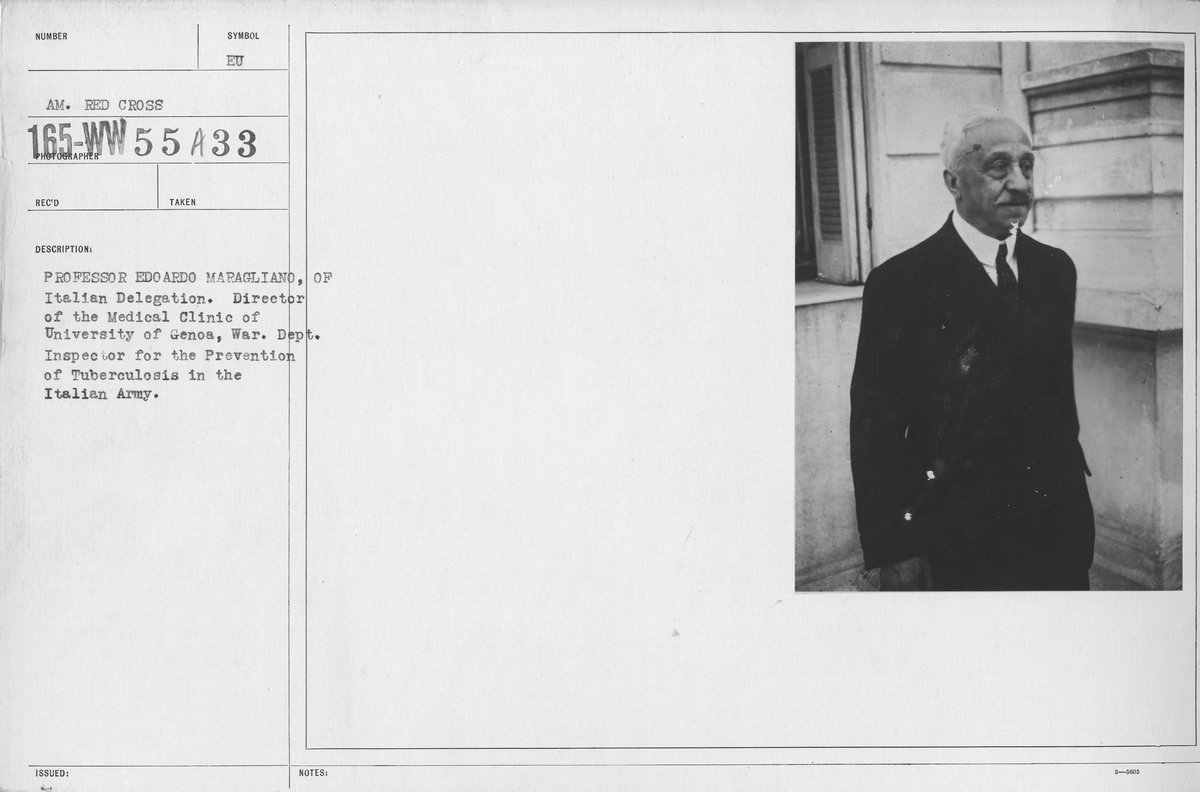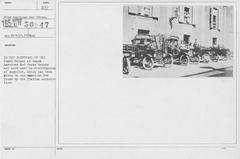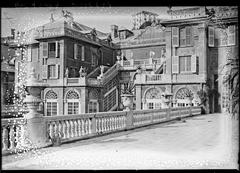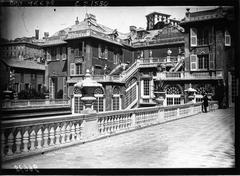
Royal Palace of Genoa: Visiting Hours, Tickets, and Historical Sites Guide
Date: 15/06/2025
Introduction: Why the Royal Palace of Genoa is a Must-Visit
The Royal Palace of Genoa (Palazzo Reale or Palazzo Stefano Balbi), located on the elegant Via Balbi, is one of Italy’s most significant historical landmarks. Built in the 17th century and later expanded by the Durazzo and Savoy families, the palace stands as a testament to Genoa’s aristocratic power and Mediterranean influence. Today, it dazzles visitors with its blend of Baroque and Neoclassical architecture, opulent interiors, and masterpieces by Van Dyck, Tintoretto, and Valerio Castello. Recognized as part of the UNESCO World Heritage Site “Genoa: Le Strade Nuove and the system of the Palazzi dei Rolli,” the Royal Palace is an essential destination for anyone interested in history, art, and architecture. This detailed guide provides all the information you need about the palace’s history, highlights, visiting hours, ticketing options, accessibility, and more, ensuring a memorable and well-prepared visit. (Musei di Genova, palazzorealegenova.cultura.gov.it, italia.it, UNESCO)
Table of Contents
- Introduction
- History and Architectural Evolution
- UNESCO Recognition and the Palazzi dei Rolli
- Artistic and Architectural Highlights
- Visitor Information
- Travel Tips
- Nearby Attractions
- Frequently Asked Questions (FAQ)
- Visuals and Interactive Content Recommendations
- Conclusion and Call to Action
- References
History and Architectural Evolution
Origins and Construction by the Balbi Family
Commissioned in 1618 by the affluent Balbi family, the Royal Palace was designed as a grand residence symbolizing Genoese wealth and status. Construction was completed between 1643 and 1650, led by architects Pier Francesco Cantone and Michele Moncino. The palace’s location on Via Balbi, a street renowned for its aristocratic residences, established it as a focal point of Genoa’s social and political life. (palazzorealegenova.cultura.gov.it, visitgenoa.it)
Expansion by the Durazzo Family
In 1677, the Durazzo family acquired the palace and initiated extensive Baroque expansions under architect Carlo Fontana. Notable additions included the East Wing, a sea-view terrace, and the Hanging Garden adorned with pebble mosaics and panoramic vistas. The interiors were enriched with frescoes, stuccoes, and sculptures by Ligurian and Italian masters, reflecting the family’s sophisticated taste and influence. (italia.it, discovernorthernitaly.com)
The Savoy Era and Royal Residence
The House of Savoy purchased the palace in 1824, transforming it into an official royal residence. Renovations led by the Accademia Ligustica enhanced the décor, and King Carlo Felice enriched the art collection, further elevating the palace’s prestige. The palace became a symbol of Genoa’s integration into the Kingdom of Sardinia and, later, unified Italy. (palazzorealegenova.cultura.gov.it)
UNESCO Recognition and the Palazzi dei Rolli
The Royal Palace stands as a key monument within the UNESCO World Heritage Site “Genoa: Le Strade Nuove and the system of the Palazzi dei Rolli.” This system saw aristocratic Genoese families host visiting dignitaries in their palaces, representing a unique network of hospitality and architectural innovation. UNESCO recognized the palaces for their universal value, architectural creativity, and distinctive role in Genoese society. (UNESCO, Wikipedia)
Artistic and Architectural Highlights
Hall of Mirrors (Galleria degli Specchi)
A dazzling centerpiece of the palace, the Hall of Mirrors is adorned with gilded stuccoes, frescoes by Domenico Parodi, and reflective mirrors that evoke the grandeur of Versailles. (italia.it)
State Apartments and Art Collections
The palace interiors feature lavish state rooms, the Throne Room, and galleries showcasing paintings by Van Dyck, Tintoretto, Luca Giordano, and other masters. Original 17th- and 18th-century furnishings, gilded chairs, and crystal chandeliers immerse visitors in the aristocratic lifestyle of Genoa’s elite. (Musei di Genova)
Hanging Garden and Terrace
The Hanging Garden, designed by Carlo Fontana, boasts pebble mosaics, an octagonal pond, and spectacular views over Genoa and its harbor—a tranquil retreat and a highlight for photography enthusiasts. (discovergenoa.com)
The Falcone Theatre
Originally a private theatre, the Falcone Theatre now functions as a cultural venue, hosting exhibitions and events within the palace complex. (italia.it)
Visitor Information
Opening Hours and Tickets
- Hours: Open Tuesday to Sunday, 9:00 AM – 7:00 PM (last admission at 6:00 PM). Closed Mondays and public holidays. (WhichMuseum)
- Tickets: General admission €10; reduced €7 (EU citizens 18–25); free for children under 18 and Genoa residents. Tickets can be purchased online via the Musei di Genova website or at the ticket office. Advance booking is recommended during peak periods.
- Special Offers: Look out for free or discounted entry during national heritage days and “Rolli Days.” (matadornetwork.com)
How to Get There
The palace is centrally located at Via Balbi 10, a short walk (about 10–15 minutes) from Genova Piazza Principe train station. Public buses and taxis are readily available. Parking is limited in the historic center; public transport is advised. (WhichMuseum)
Accessibility and Visitor Services
The Royal Palace offers ramps and elevators in key areas for wheelchair users, though some historic rooms remain less accessible due to architectural constraints. Restrooms, a bookshop, and knowledgeable staff are available. Multi-language audio guides can be rented on-site. (Musei di Genova)
Travel Tips
- Best Time to Visit: Weekday mornings or late afternoons are less crowded.
- Photography: Non-flash photography is permitted; check with staff for restrictions.
- Dress Code: No formal dress code, but comfortable shoes are recommended.
- Guided Tours: Offered in multiple languages; booking ahead is recommended for in-depth exploration.
- Combined Visits: Consider a combined ticket with Palazzo Rosso and Palazzo Bianco for a comprehensive Genoa cultural experience. (Trips & Leisure)
Nearby Attractions
After touring the Royal Palace, explore Genoa’s other UNESCO-listed Palazzi dei Rolli, such as Palazzo Rosso and Palazzo Bianco on Via Garibaldi. The Genoa Cathedral and the Galata Maritime Museum are also within walking distance and offer further insight into the city’s rich history. (fearlesslyitaly.com)
Frequently Asked Questions (FAQ)
Q: What are the Royal Palace of Genoa visiting hours?
A: Tuesday to Sunday, 9:00 AM–7:00 PM; closed Mondays and public holidays.
Q: How do I buy tickets?
A: Purchase tickets online via the official Musei di Genova website or at the entrance.
Q: Is the palace accessible for wheelchair users?
A: Most public areas are accessible; contact the museum in advance for assistance.
Q: Are guided tours available?
A: Yes, guided tours and audio guides can be booked in advance.
Q: What other historical sites are nearby?
A: Palazzo Rosso, Palazzo Bianco, Genoa Cathedral, and the Galata Maritime Museum.
Visuals and Interactive Content Recommendations
- Include high-quality images of the Hall of Mirrors, the gardens, and the palace façade with descriptive alt text.
- Embed an interactive map showing the palace’s location and nearby attractions.
- Offer a virtual tour link on the Musei di Genova website.
Conclusion and Call to Action
The Royal Palace of Genoa is a jewel of Italian history and culture, offering visitors a journey through centuries of aristocratic life, art, and architectural splendor. With its rich collections, stunning interiors, and central location amidst Genoa’s historic core, it is an essential stop for any traveler. Plan your visit by checking the latest hours and ticketing options, consider a guided tour for deeper insight, and explore nearby palaces to experience the full grandeur of Genoa’s heritage.
Ready to explore Genoa’s royal past?
Download the Audiala app for personalized audio guides and up-to-date visitor information. Follow us on social media and subscribe to our newsletter for exclusive tips and updates on Genoa’s historical sites.
References
- Discover the palace’s history and virtual tours: (palazzorealegenova.cultura.gov.it)
- Official visitor information: (Musei di Genova)
- UNESCO World Heritage listing: (UNESCO)
- Visitor reviews and practical tips: (WhichMuseum), (italia.it)
- Further guides: (visitgenoa.it), (Trips & Leisure), (fearlesslyitaly.com), (Amongst Romans)





































































































